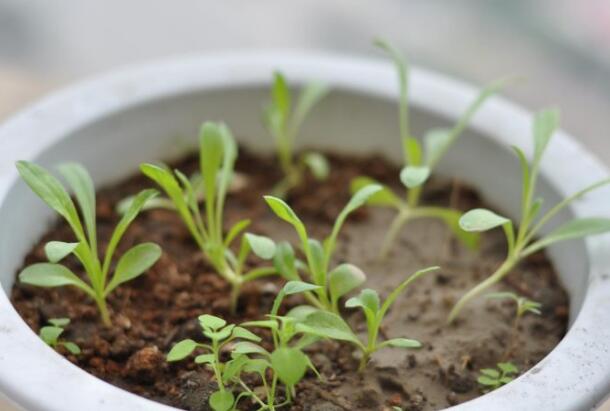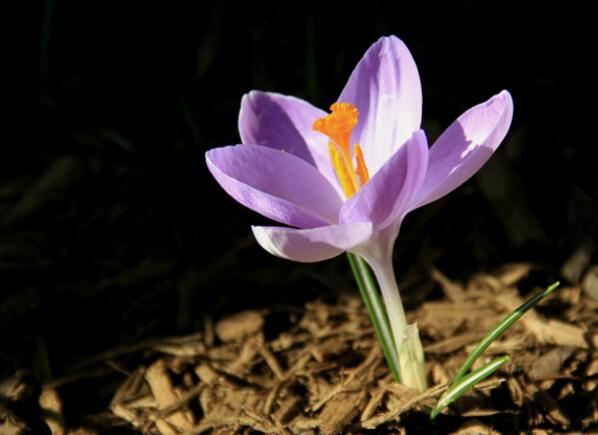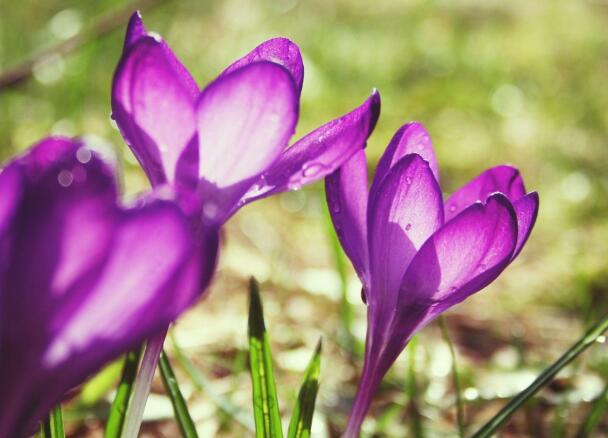How to sow cornflower, cornflower propagation method/September sowing 70 days after flowering
For cornflower, I believe many people have seen it. It has beautiful flowers and rich colors, so it is a kind of flower loved by flower friends. About the breeding method of cornflower, it is very simple, it is worth knowing a little, but do you know the breeding method of cornflower? Compared with other flowers, cornflower is not good for cutting, but suitable for sowing and reproduction, so how to sow cornflower? Next, the editor will answer the questions for you.
First, how to sow cornflower, the time is very important.

In life, because the cornflower is beautiful in appearance and easy to cultivate, many flower friends will keep one or two pots at home. There are many ways to reproduce cornflower, but it is best to sow seeds, and others are not suitable for us. As for how to sow cornflower, first of all, it is the choice of time, and then we should pay attention to the soil and watering. Let's move on to the details.
2. Sowing and propagation methods of cornflower.
1. Sowing time of cornflower
With regard to the sowing time of cornflower, there are generally two choices: 1 is spring sowing, that is, March-April; 2 is autumn sowing, usually in September-October. If you are not in a hurry, you'd better choose autumn sowing, mid-late September.
2. Selection of basin soil
How to sow cornflower, the soil is also very critical, according to the growth habits, we should choose fertile, loose soil. There are also some flower friends who dig the soil with green belts, which grow strong after sowing.
3. Sowing seeds
In the prepared pot soil, sow the right amount of cornflower seeds, the seeds should be healthy and full. If you want to be ahead of other flower friends from the beginning, you should put the fluffy side of the seed. Of course not, then there is no way, just lay it horizontally.
Note: about sowing, many flower friends want to ask how many corn chrysanthemum seeds can be planted in a pot? In this regard, the editor suggests that it is better to have two pots with a diameter of 25cm, and a larger one can be added or subtracted according to this proportion.
4. Cover the seeds
After sowing the cornflower seeds, sprinkle them with thin soil (no seeds can be found) and compact them slightly. Be careful not to use too much force, otherwise the seeds will not be easily unearthed.
5. Watering
How to sow cornflower, after completing the above steps, you can water it, preferably enough at one time, with water flowing out of the mouth of the bottom of the flowerpot. After that, keep the pot soil moist.
Amount of watering: many beginners want to ask about the amount of water after sowing. In this regard, the editor's advice is that the seedlings should be watered more often, once every two days, and when they grow up and are strong, they can be watered whenever they want.
6. Fertilization
After completing the above steps, the sowing and propagation of corn chrysanthemum is basically over. Then wait until the planting has survived, apply the right amount of fertilizer every 10 days or half a month, and stop fertilizing in March of the following year to wait for flowering.
3. How long will it take for the cornflower to blossom after sowing, 70-85 days
Many flower friends will ask about this question. As far as the editor knows, in autumn sowing at 18: 25 ℃, cornflower will sprout 10 or 13 days after sowing. True leaves will appear in about 15 days. Generally speaking, it takes about 70-85 days for the cornflower to blossom after sowing.
Sowing, propagation and operation methods of cornflower
Cornflower is a good material for cutting flowers, and it is often used in the layout of flower beds and borders, and flower friends can also plant plants at home. The cornflower, which symbolizes happiness, is a flower variety that many flower friends like very much. because the life span of the cornflower is not long, it is generally dominated by sowing and reproduction.
Cornflower
First, sowing and breeding:
Do not tolerate transplanting, should bring soil ball when planting. Basal fertilizer should be applied before planting. Proper watering during the growth period can prevent rotting roots, and topdressing liquid fertilizer once a month can promote growth. Its stem is slender, topping and coring at the seedling stage, promoting multi-branched lateral branches and plant dwarfing.
Main points of cultivation:
You can sow seeds in both spring and autumn, and autumn sowing is better. Sowing in the prepared seedbed in the middle and late September, covering the soil with no seeds, slightly compacting, covering with grass and watering enough water, often keeping the soil moist and going to cover the grass after germination. When the seedlings have 6 Mel 7 leaflets, they can be transplanted or planted with a distance of about 30 cm. After survival, 5 times water is applied to mature human feces and urine every 10 days or every month, and fertilization is stopped to wait for flowering in March of the following year. If potted, the potted soil should be loose and fertile, and the rotten leaves of garden soil, ash of plants and trees should be mixed with mixed soil. when the seedlings have six or seven leaves, they will be transplanted for the first time; when they grow later, they will be changed to three pots, because the cornflower has straight roots, and the big seedlings are not resistant to transplanting. It can be continuously buried in the soil in winter and taken out in early March. Fertilizing should be diligent and stop fertilizing when the bud appears. Suitable temperature for germination: 15 ℃ 20 min sowing time: spring-autumn. The suitable temperature for growth is 15 ℃ 25 min. Flowering period: spring-summer seedlings: choose loose and fertile soil as a bed, covering soil about 0.2 cm, about 8 Mel sprouting for 15 days. Cultivation: when the leaves of the seedlings reach 6 Mel 7, one plant will be planted in pots for every 13 mi 17 cm. After the seedlings survive after planting, pick the heart once, promote more branches, can blossom more, on the contrary, if there are too many branches, part of the lateral buds should be removed if necessary, larger flowers can be obtained. Because of taproot, it is appropriate to direct broadcast autumn sowing open field cover overwintering, early summer flowering, such as cold bed overwintering can blossom at the end of spring, spring sowing should be sown as soon as possible. It blossoms in June.
2. Sowing methods:
1. Raising seedlings: choose loose and fertile soil as bed, covering soil about 0.2 cm.
2. Cultivation: when the first leaf of the seedling is 6 Mel 7, one plant will be planted in pot every 13 mi 17 cm. After the seedlings survive after planting, pick the heart once, promote more branches, can blossom more, on the contrary, if there are too many branches, part of the lateral buds should be removed if necessary, larger flowers can be obtained. Because of taproot, it is appropriate to direct broadcast autumn sowing open field cover overwintering, early summer flowering, such as cold bed overwintering can blossom at the end of spring, spring sowing should be sown as soon as possible. It blossoms in June.
3. Use soil: prefer loose and fertile sandy loam with good drainage. The cultivated soil should be well drained and ventilated as far as possible. if the soil is sticky, it can be improved by mixing 40% snake sawdust or perlite.
4. Watering: watering once a day is enough in principle, but when it is drier in summer, it can be watered once in the morning and evening to keep the potted soil moist and reduce the temperature of potted plants, but avoid stagnant water.
5. Fertilization: the cornflower likes more fertilizer, and the three-element diluent should be applied once a month during the growth period. If the leaves are too luxuriant, the proportion of nitrogen fertilizer should be reduced, and more phosphorus and potassium fertilizer should be applied before flowering in order to get larger and beautiful flowers.
6. flowering management: cornflower can have natural lateral branches, and if there are more lateral branches, the flowers are smaller. If necessary, part of the lateral buds can be removed, and only smaller branches can be left, larger flowers can be obtained. Cornflower is a long-day plant, which has a short sunshine time in winter. If plant lamps are used to supplement lighting at night, it can be opened earlier.
How to plant corn chrysanthemum to propagate
Cornflower, also known as blue hibiscus, Cuilan, litchi chrysanthemum, etc., is an annual or biennial herb of the Compositae family, with high ornamental value, tall and straight planting plants, long pedicels, suitable for cut flowers, and can also be used as flower diameter materials. Dwarf plants are only 20 centimeters high and can be used for flower beds, grass edges or potted flowers. Let's take a look at the breeding methods of chrysanthemum.
Growth habits of cornflower
The hometown of cornflower is in Europe, it used to be a kind of wild flower, after many years of cultivation, the "wild" nature has become less, the flower has become bigger, and the color has become more. There are purple, blue, light red, white and other varieties, of which purple and blue are the most precious. There are everywhere in Germany's hillsides, fields, watersides, roadsides, front and back houses, and are regarded as the national flower in Germany. Its adaptability is strong, like sufficient sunshine, not resistant to wet shade, must be planted in a place with sufficient sunshine and good drainage, otherwise it will often lead to death due to dampness. More hardy, like cold and cool, avoid hot. Like sandy soil that is fertile, loose and well drained.
Propagation methods of cornflower
Cornflower seeds are generally sown in spring and autumn, of which autumn is the best, probably from mid-August to mid-late September. When planting, sow the seeds in the seedbed in the open field, gently compaction, and then pour the right amount of water, covered with grass, can germinate quickly, and remove the grass after sprouting. When the leaves grow to 6-7, they can be planted in November, and then 1:5 of rotten human feces and urine will be applied every 10 days or half a month until February to March of the following year. Potted sowing requires fertile and loose soil, and mixed soil such as rotten leaves is recommended.
Culture method of cornflower
1. Planting: after survival after planting, cornflower seedlings are plucked once to promote more branches and blossom more. On the contrary, if there are too many branches, part of the lateral buds should be removed if necessary, and larger flowers can be obtained. Because of taproot, it is appropriate to direct broadcast autumn sowing open field cover overwintering, early summer flowering, such as cold bed overwintering can blossom at the end of spring, spring sowing should be sown as soon as possible. It blossoms in June.
2. Potted soil: the potted soil of cornflower should be loose and fertile, and sandy soil with good looseness and drainage should be selected. it is best to use garden soil rotten leaves, plant ash and so on to be mixed with mixed soil. it is best to maintain good ventilation and facilitate drainage. If the soil is too sticky, 30% snake sawdust or perlite can be added into the soil.
3. Temperature: the cornflower has strong cold resistance and can be planted in open field in East China, while it must be covered in North China to survive the winter. Cut flowers are usually cultivated in greenhouse, sowed in August, planted in September, and can produce flowers in February of the following year. The warm land in the customs is usually sown from August to September, the open field is covered with overwintering, it is planted in early spring of the following year, and blossoms in early summer. The northeast is sown in spring in the greenhouse.
4. Watering: the cornflower is not resistant to shade and dampness, so it only needs to be watered once a day, but in the hot and dry summer, it is watered once in the morning and in the evening to meet the water demand and cool the soil at the same time. Pay attention not to pour too much water to cause accumulation in the basin.
5. Fertilization: the cornflower likes to be more fertile and needs fertile soil. During the growth period, the three-element diluent should be applied once a month. If the leaves are too luxuriant, the proportion of nitrogen fertilizer should be reduced, and more phosphorus and potassium fertilizer should be applied before flowering in order to get larger and beautiful flowers.
Matters needing attention of cornflower
1. The cornflower is strong, cold-resistant and sunny, requiring fertile, loose and well-drained soil.
2. Basal fertilizer should be applied before planting cornflower. Because the cornflower has a straight root system and is not resistant to transplantation, it is necessary to bring a larger soil mass when transplanting.
3. The stem of Chrysanthemum morifolium is thin and weak and is easy to lodge, so the planting distance should not be too dense. It is necessary to prevent the lodging caused by overdense growth and poor ventilation.
4. Cornflower needs to top and pick the heart at the seedling stage to promote more branches and dwarf the plant, so that it blossoms more and the plant shape is beautiful.
5. During the growing period of cornflower, liquid fertilizer should be applied once every 20 days, but it should be noted that more nitrogen fertilizer should be applied, and more phosphorus and potassium fertilizer should be applied properly to make the stem firm and the flower color bright.
6. the cornflower should be watered properly, not too much, and pay attention to timely drainage in the rainy season, otherwise it will cause rotten roots and affect the normal growth of the plant.
- Prev

How to reproduce saffron? two methods of propagation / bulb / sowing of saffron
Saffron is a highly ornamental plant. In fact, it can be roughly divided into two methods about how to reproduce crocuses, which are bulbous reproduction and sowing reproduction. The survival rates of these two methods are relatively high. As for the specific methods of saffron reproduction, the following editor will take you to understand.
- Next

How to reproduce saffron, how to reproduce saffron / asexual reproduction
Saffron is a common plant in people's life, and it is a kind of flower that many plants like to cultivate. How to reproduce saffron is also an issue that many people are concerned about. In fact, the reproduction of saffron is based on the location, and the planting methods are different in different places.
Related
- Fuxing push coffee new agricultural production and marketing class: lack of small-scale processing plants
- Jujube rice field leisure farm deep ploughing Yilan for five years to create a space for organic food and play
- Nongyu Farm-A trial of organic papaya for brave women with advanced technology
- Four points for attention in the prevention and control of diseases and insect pests of edible fungi
- How to add nutrient solution to Edible Fungi
- Is there any good way to control edible fungus mites?
- Open Inoculation Technology of Edible Fungi
- Is there any clever way to use fertilizer for edible fungus in winter?
- What agents are used to kill the pathogens of edible fungi in the mushroom shed?
- Rapid drying of Edible Fungi

